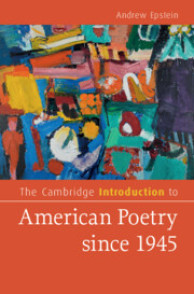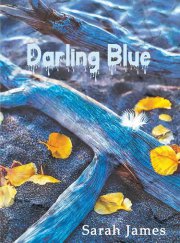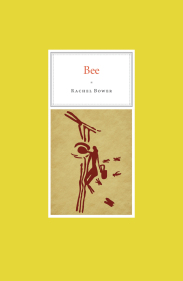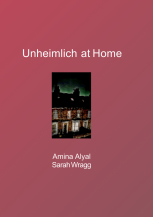
Andrew Epstein,
The Cambridge Introduction to American Poetry since 1945,
Cambridge University Press, 2023.
ISBN 9781108687317 £22.99.
The Cambridge Introduction to Literature series is targeted at university students, teachers and lecturers. It aims to acquaint them with ‘key topics and authors’ in an ‘accessible and lively’ manner. It also requires each monograph to be ‘concise, yet packed with essential information’ and to conclude with ‘key suggestions for further reading’. Andrew Epstein does, in general, fulfil his remit well. He keeps strictly to his ‘mission’, which is ‘to chart the course of American poetry since 1945 and introduce readers to its key developments, major poets, lasting poems, and most interesting features’. His 264 pages include a wealth of useful detail that is presented in a way that does not ramble, though there is a tendency to recycle points and characteristics beyond the needs of summary. The section on post-War verse is particularly strong and the rest of the book makes sense of the succeeding decades, though it does not convince that they are anything but a falling off. Not only is there a 15-page long, seemingly exhaustive Works-Cited section, but footnotes in every chapter pointing to books that will help ‘further discussion’. Epstein’s style is certainly ‘lively’, perhaps too lively, for he thinks his readers need the fillip of overegged adjectives (‘a stunned audience’, an ‘ecstatic reception’, ‘wrenching … poems’, ‘searing poems’, ‘bruising microaggressions’, ‘the vertiginous experience of daily life’), as well as hyperbolic adverbs (‘relentlessly explores’) and verbs (‘the poetry world has been roiled…’). Added linguistic pep is sought in colloquialisms (‘campy joie de vivre’, ‘hokey … tone’, ‘laugh-out-loud extreme’, ‘buzzed- about books’). One thing that miltates against this attempted liveliness is Epstein’s love of lists: I counted twenty-nine in all, some of them taking up only a couple of lines, but others extending to over half a page. It is as if he has in his notes numbered points on a wide variety of literary or socio-political topics and whenever they come up, he dumps those into the narrative with numbers replaced by commas, thereby forming sentences that even in their most concise form are long.
Epstein subdivides his topic into three parts: ‘American Poetry from 1945 to 1970’ (the largest section), ‘from 1970 to 2000’ and ‘from 2000 to the Present’ (the shortest). This division is inevitably somewhat arbitrary in suggesting clean breaks between the parts and therefore not accounting for overlaps, but it does manage to give helpful form to three periods that would otherwise seem to be amorphous and confusing. Further structure is added by seeing the poets and movements in terms of ‘three central, overlapping themes …: self, language, and culture’. The trouble with this approach is that the categories are so loose and baggy they can swallow almost every poem that has ever been written, let alone American poems. The author could have adopted the solution of Albert Gelpi in American Poetry after Modernism (2015), who devotes each chapter to two or three major poets, related by theme, but then his study would be less of a survey and one tied to evaluation - a strategy he is reluctant to adopt - and, as he would probably see it, elitism.
The most serious consequence of disregarding overlaps is where the period from 1945 to 1970 is detached from the pre-war period: ‘For reasons of space and cohesiveness, this introduction to poetry will not focus on modernist or late modernist poets … despite the fact that some of the central figures continued to produce major work long after the starting point of this study….’ Epstein here admits that his refusal to discuss, for instance, Pound’s Pisan Cantos, W.C. Williams’ Paterson and Zukofsky’s A 8-23, not to mention Stevens’ late manner and the late flowering of Oppen and Niedecker, seriously skew his study. Had he not done so, the period from 1945 to 1970 would be even more clearly revealed as a highpoint, after which there has been progressive decline. I suppose the author may have felt that the section dealing with that period is already by far longer than any other; to add the modernists and late modernists would make the following sections look like mere addenda. Nevertheless the distortion remains and it forces him to oversell the concluding periods: ‘Just as this exciting moment was unfolding in African American poetry, another of the most significant developments of this period of American poetry was occurring … Latinx poetry’; ‘I must pause to consider the incredible flowering of poetry by LGBTQ writers during this period.’ His selling point is a welcome move towards diversity, but one that does not seem to require fully-achieved language or form: ‘In fact, the most … important development in post-2000 American poetry has been this rapid diversification, in terms of gender, sexuality, sexual identity, ability, and race and ethnicity.’
This segmentation also occasionally results in Epstein not quite seeing poets and movements in focus. For instance, he mentions Elizabeth Bishop and Marianne Moore together, but because he regards Moore as a pre-War modernist, he does not see the need to point out that she was Bishop’s mentor for quite a time before the younger poet finally broke free. Similarly, he gives Kenneth Rexroth one mention as part of the background to the San Francisco Renaissance, but since he was an older poet, who started publishing in 1940, he says nothing more, thus failing to give him credit as the father of the Beats and an early pioneer of poetry-jazz fusion which became an important phenomenon in the 1950s and 1960s.
Of course, as the author concedes, an introduction like his, no matter how detailed, cannot cover every poet or every tendency in American verse, but it can be criticised for its emphases and omissions. Thus he promises to lay stress on ‘representative poems’ through ‘close reading’, though it is a close reading that concentrates on content and has almost nothing to say about sound structure or architectonics. But the question is: which poems are chosen and how much space is alloted to them? Thus in Chapter 3 the author deals with the Beats and gives nine pages to Allen Ginsberg, but only five lines to Bob Kaufman and his poem ‘Walking Parker Home’. Does not one of the best of the Beat Poets and one of the finest Black poets in the second half of the twentieth century deserve more? In Chapter 5 there is a section on Confessional Verse which provides a valuable analysis of Lowell’s, Berryman’s and Plath’s key Confessional poems (four, four and eight pages respectively are devoted to them), but then Anne Sexton is given two and a half pages. Surely, Sexton reruns issues inherent in Plath’s poetry, but at a less pressurised level. Would not it have been more useful to devote the space to Theodore Roethke who devised a new form of Confessionalism, based on the theories of Jung rather than Freud, or Randall Jarrell who created an intriguing form of cross-gender Confessionalism in his dramatic monologues? The reason he has chosen Sexton seems purely structural: he wants to see her as an early apostle of unconfined confessionalism that is later taken up by neo-Confessional poets like Sharon Olds.
The biggest omission is the refusal to respond to modernism’s vigorous health after 1945, but there are other, smaller omissions. In terms of movements ecopoetry, though mentioned in passing a couple of times, is not thought to merit a subsection. C.K.Williams is mentioned once in a list a latter-day formalists, but there is no close reading of the distinctive effects he gets out of the very long line. The fine poet August Kleinzahler does not even get a single mention.
For all his talk about inclusivity, Epstein is not inclusive in one area. He has no interest in American poetry or indeed any poetry that occurs outside America or any poetry written inside America by a non-American and therefore this arch inclusivist begins to look like an American Exceptionalist. Harry Matthews, an American poet living in Paris, is not mentioned at all, which is a pity because he was a leading member of Oulipo, and if Epstein had recognised that fact, he could have put into context the many American poets in his book that gesture towards Oulipo by using constraints. A greater awareness of pre-War French surrealist poetry would have also revealed how much Ashberry and O’Hara owed to it. Anglo-American poetry, composed in America, similarly passes the author by. This is again a pity because early Berryman and Rich were both deeply influenced by W. H. Auden, and Thom Gunn wrote some of the finest versions in English of that subgenre, the AIDS elegy, in California, versions that an American poet like Mark Doty has rivalled.
As perhaps the author of such a survey should do, Epstein tries his best to appear fair. He often sits on the fence between contending critical positions. Any categorisation is always hedged around with provisos. Evaluation is avoided if at all possible. Yet, as he has to admit, his survey is not impartial: ‘I inevitably shape [the book] according to my … biases, highlighting poets and movements that I find particularly valuable….’ Most of his critical output has been on the New York School and he is interested in the interface between that movement and rock music. He has, for instance, examined the interconnections between the New York School and Lou Reed of the Velvet Underground and throughout the book there are references to the way popular culture echoes poetry and vice versa. In this study his first chapter is on ‘The Raw and the Cooked’ in American Poetry and with his background it is clear that he is on the side of the raw poets showcased in Donald Allen’s 1960 anthology, The New American Poetry, not only the New York School, but also the Beats, the Black Mountain College, the San Francisco Renaissance and a group of leftovers - Snyder, Whalen and Jones. His chapters on these movements are the best in the book - sympathetic, acute in their comment and maintaining a clear sense of the poetic and socio-political background.
His writing on the cooked poets is, in contrast, rarely enthusiastic and sometimes plainly unfair. He sees the Formalists as in varying degrees slaves to the principles of New Criticism and the adjectives he uses to describe ‘the New-Criticism poem’ reveals his hostility: ‘stuffy’, ‘suffocating’, ‘rigid’, ‘academic’, ‘genteel’, ‘anemic’, ’safe’, ‘detached’, ‘lfeless’, ‘arch’, ‘somber’, ‘dour’, ‘gloomy’, ‘conservative’, ‘nostalgic’. But is Elizabeth Bishop lifeless? Is Sylvia Plath genteel? Is John Berryman lacking in humour? Is Weldon Keyes academic? Are Richard Wilbur and James Merrill suffocating? A dislike of this tradition can lead to false steps. Thus he says that in Life Studies Lowell threw off ‘the shackles of the New Critical mode’ and began ‘writing shockingly personal, looser … poems about his own private turmoil and mental illness’. Firstly, the early ‘New Critical mode’ did not restrict Lowell: ‘A Quaker Graveyard in Nantucket’ is one of his finest poems. Life Studies was less a question of liberation than of moving on to a new style once the old one had become exhausted. Secondly, by ending the chapter just after the quoted comment, Epstein gives the impression that Lowell stayed within a free-verse Confessional manner; but his next volume, For the Union Dead, sees him moving back to traditional form and the one after that, Near the Ocean, is largely written in Marvellian stanzas. According to Epstein, the Black Mountain poet, Robert Duncan, ‘rejected the strictures of Eliot and the New Criticism’. This is true to an extent, but what it leaves out is that New Criticism is largely based on the principles of Imagism and Duncan was a huge fan of ‘the perfect Imagist’, as Pound called her, H.D. He wrote on her throughout his life and after his death The H.D. Book was published as a testament to his devotion. Finally, Epstein claims that the work of Michael S. Harper ‘differs from that of confessional poets like Robert Lowell and W.D. Snodgrass by broadening outward to connect the speaker’s searing personal grief to larger questions of race and nation’. But this exactly what Lowell and, to a lesser extent, Snodgrass do. In ‘Skunk Hour’ Lowell’s derangement is a way of pointing out how deranged New-England and, beyond that, American society are. ‘For the Union Dead’ confesses the Lowell family’s involvement in the racist treatment of black soldiers in the Civil War, but this is implicitly made to stand for the analogous mistreatment of black soldiers right at that very moment in Vietnam.
Epstein has therefore produced a helpful, informative introduction to American poetry since 1945, though a slightly distorted one, an introduction that caters well to its market. Certain paradoxes, however, remain. He is very enthusiastic about progressive identity politics and yet he does not like committed verse; he is all for sexual freedom and yet the ghost of the American Puritan seems to inhabit him (he talks, for instance, of the Beats’ ‘wanton … debauched … road-trips’). Despite reservations about its structure, bias, emphases, omissions and style, this survey should be welcomed.
David Fulton
To order this book click here
David Fulton was born in Walthamstow, London E.17, in 1949, educated at St David's College, Lampeter, the University of Essex and Jesus College, Oxford and taught English and American Literature, and Creative Writing at the Universities of Pristina, Novi Sad, Changchun, Edinburgh and Brunel. His new book of short stories about Yugoslavia, A Country of the Mind, is published by Brigand Publishing.




